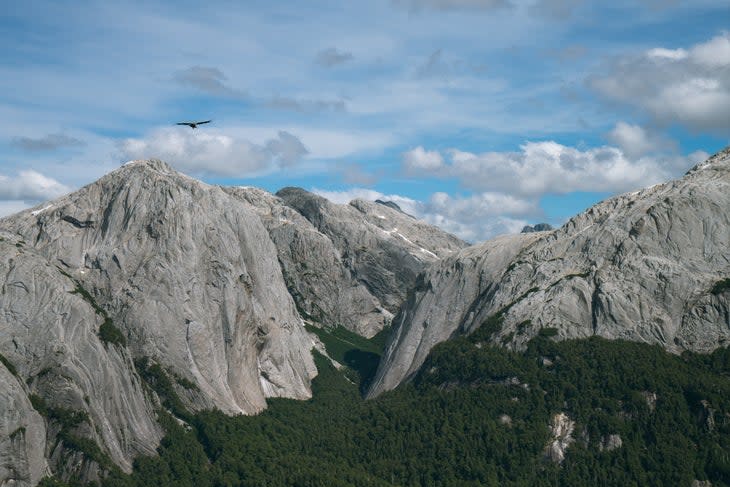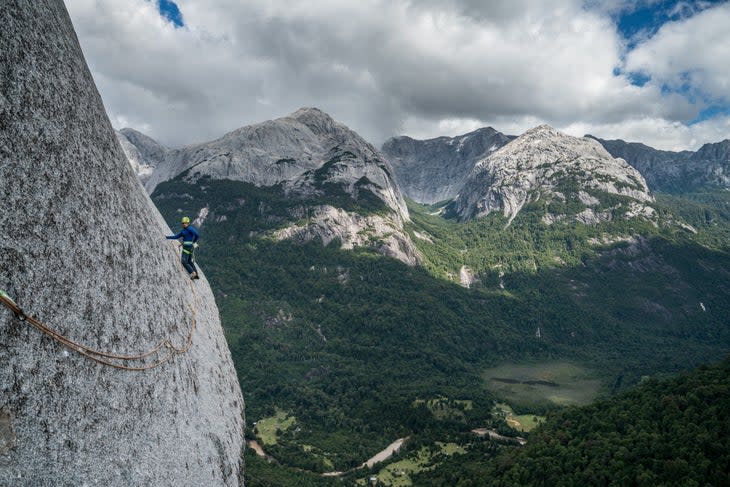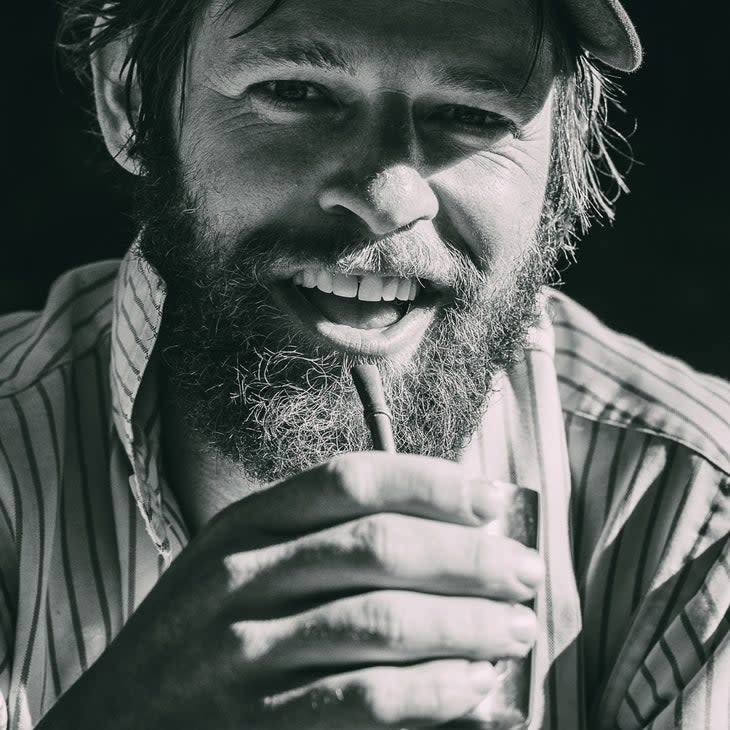Cochamó Is For Sale
This article originally appeared on Climbing
It's easy to see why Cochamo is called the Yosemite of South America. Walls of white granite the size of El Capitan and Half Dome abound in every direction. Somber groves of massive Alerce trees stand tall and stalwart like their northern cousins, Giant Sequoias. And in the middle of it all, the crystalline Rio Cochamo wends its serpentine path, just like the Merced River in Yosemite Valley.
But in some sense, the differences between the two are more glaring than the similarities. On the one hand, Cochamo enjoys far fewer visitors; no roads, traffic jams or gift shops; no street lights or power lines. On the other hand, there are no official crews to build or maintain trails, no rangers to enforce rules and regulations, no trained professionals to deal with human waste.
The reason for all these disparities largely boils down to the same thing. Perhaps the most important distinction between Yosemite and Cochamo is this: Cochamo is not a national park.

It may feel like one when you look around at 360 degrees of jaw dropping vistas, clean clear waters, and magnificent flora and fauna as far as the eye can see. But it's not. And because Cochamo does not have any sort of federal land designation--park, forest, reserve, or otherwise--it has no official government protections from large scale extractive or industrial projects (including industrial tourism).
Most of the land people recreate on when visiting Cochamo is actually a collection of private backcountry parcels connected by a roughly 12-kilometer trail, which starts just a few kilometers from the nearby town of Cochamo. Land owners, local community members and organizations, NGOs, and climbers from around the world have worked together to create all the infrastructure that climbers and other tourists use when visiting Cochamo--from trails to campgrounds to toilets, and everything in between. This organic approach to developing sustainable tourism has created a world class destination that in many ways (including cost and ease of access) is more attainable to most Chileans than the more famous national parks, such as Torres Del Paine, further south. At least, for the time being.
The largest land holding in the Cochamo area is called Hacienda Pucheguin, "320.000-acres of extreme natural beauty [commanding] native forests unique to the world" according to the real estate website Christie’s, where it is listed for a currently undisclosed amount. Of particular note to climbers, Hacienda Pucheguin includes the entirety of the Trinidad, Anfiteatro, and Monster valleys--many lifetimes worth of climbing on walls up to 1,400 meters, and the majority of the established routes in Cochamo. Moreover, "the Cochamo river watershed comprises 81.544 acres, half of which belongs to Hacienda Pucheguin," says Andres Diez, Executive Director of Puelo Patagonia.

The owner of Hacienda Pucheguin is Roberto Hagemann, a deep-pocketed Chilean businessman who has made his riches off massive hydroelectric projects, real estate investment, and other forms of industrial development. The company of which he is a primary stakeholder--Mediterraneo S.A.--was, in fact, recently attempting to install a huge 210 megawatt hydroelectric power plant on the next river south of the Cochamo Valley, the Rio Manso. That project was shut down by Chile's Supreme Court, which upheld the Third Environmental Tribunal's resolution that "Mediterraneo's contracted anthropological study of the socio-ecological impacts on Indigenous people was inadequate," according to this article from the Natural Resources Defense Council.
It wasn't the first time a hydroelectric dam was slated to impact the unique cultural heritage and ecology of the Cochamo region. In 2009, a Spanish power company called Endesa was working on a project to install a series of dams on the Rio Cochamo itself--a proposition as unthinkably monstrous as a dam on the Merced, flooding Yosemite Valley (let's not forget Hetch Hetchy). That project was shut down as well when then-president Michel Bachelet "decreed that 11 watersheds, among them the Cochamo... would be off-limits to hydroelectric dam projects on account of their high conservation and tourism value," as reported in Patagon Journal.
Hagemann's past projects make him a deeply disconcerting figure to possess the biggest (nearly one third of the Comuna to which it belongs) and arguably grandest tract of land in Cochamo. There is more than simply great climbing at stake here. Cochamo is part of the Valdivian rainforest--a coastal ecosystem that has been called "The Lungs of Patagonia," brimming with endangered and endemic flora and fauna.
Read: The Mine That Eats Mountains
That is why local NGOs Puelo Patagonia and Organizacion Valle Cochamo have been advocating for sanctuary status for much of the Cochamo valley. Sanctuary status is one of the best layers of protection for private and public land in Chile. In the case of Cochamo, better even than national parks, according to Tatiana Sandoval, president of Organizacion Valle Cochamo, and Cochamo native.
"The tourist load of this place is high and without a doubt it benefits many families in the community, but that is also a threat,” says Sandoval. “The Valle Cochamo Nature Sanctuary seeks to recognize environmental and cultural values and reconcile care for nature with the lifestyles of the local inhabitants. This [designation] is the only protection [in Chile] where you can incorporate public and private properties, it is also a legal figure that can facilitate the collaborative work that we have done many times without the support of the state.”
For now, the best thing climbers can do in support of Cochamo is to educate themselves on the issues, and participate in campaigns when they are launched by trustworthy and reputable organizations. Puelo Patagonia and Organizacion Cochamo are both active on instagram, and post educational materials periodically. You can also follow along the page Santuario Valle Cochamo to learn more about those efforts and donate money to either organization at their websites: https://puelopatagonia.cl/ and https://vallecochamo.org/en/. Both these NGOs have done incredible work together with the Arrieros del Valle Cochamo (an association of local horse guides) stewarding the valley (trail work, trash removal, waste management, etc), and advocating for long term conservation strategies (developing and managing visitor capacity, fighting hydro projects, getting ZOIT status, etc).
Finally, if you happen to be sitting on so many hundreds of millions of dollars that you don't know what to do with it all, you might consider buying Estancia Pucheguin and donating it back Organizacion Valle Cochamo to be preserved in perpetuity as a sanctuary, as Tompkins Conservation has done with numerous tracts of land further south. While the price is not shown online, it was going for $150M USD back in 2018 when it was first listed on Christie's. Not surprisingly, nobody has yet come forth to pony up the dough.

Chris Kalman is one of the founders and Executive Director of Friends of Cochamo, a 501(c)(3) nonprofit based in the United States whose mission is to inspire the collective stewardship of the unique ecology and culture in and around the Cochamo Valley.
For exclusive access to all of our fitness, gear, adventure, and travel stories, plus discounts on trips, events, and gear, sign up for Outside+ today.

